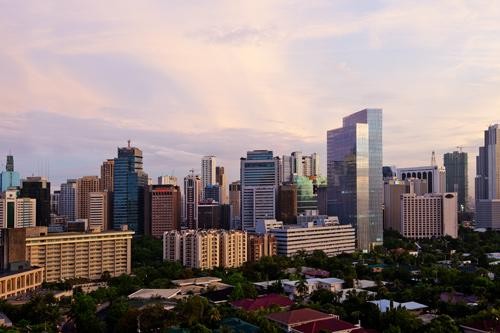Emerging Markets Investing in the Philippines US News
Post on: 22 Май, 2015 No Comment

This nation is becoming attractive for investment, experts say, as the economy grows and large corporations expand operations there.
When it comes to emerging markets, the average investor is focused on Brazil, Russia, India and China – known as the BRIC countries. But some smaller developing countries are also worth a look as they pull ahead in terms of economic growth and attract booming industries. One notable example: The Philippines grew its gross domestic product 7.2 percent in 2013, and the country has trumped India as the leading destination for call centers. Large corporations including JP Morgan Chase and Procter & Gamble recently expanded operations there.
Unlike residents of many other emerging markets, Filipinos speak English fluently, and the country supplies low-wage workers that appeal to large companies growing their operations overseas. These factors make the Philippines an attractive area for investment, experts say.
Health of the Philippines’ economy. Nicolas Jaquier, emerging market economist at Standard Life Investments, notes that the Philippines beat China’s GDP growth in the first quarter of 2013, and its 7.2 percent GDP growth last year was second to China’s 7.7 percent growth rate.
“Overall, what sets [the Philippines] apart is an improved political environment. President [Benigno S. Aquino III’s] reform agenda has paid dividends in the last couple years,” Jaquier says. “They imposed new taxes, such as sin taxes on tobacco and alcohol, raising money that can be redeployed into infrastructure.”
New infrastructure attracts global businesses and bodes well for the Philippines’ tourism industry, which is underdeveloped, Jaquier says.
The country has also been insulated from some of the effects of international market downturns thanks to the number of remittances it receives from citizens living abroad. “A steady stream of inflows made it more resilient,” Jaquier says.
Changes in the economies of competing nations matter for the Philippines. Horst von Wendorff, founder of Virtual Knowledge Workers, a business process outsourcing company based in Cambridge, Massachusetts, says companies are increasingly turning to the Philippines for call center expansion as opposed to India, where English is spoken less fluently.
Von Wendorff adds that wages will eventually go up as the Philippines’ population decreases, and there is a possibility that the next administration will pick up the labor policies President Acquino adopted. “It will take a while to see the effects” of higher wages on the business processing outsourcing industry, von Wendorff says.
Investing in the Philippines. Investors should keep in mind that emerging markets can be volatile investments since they may be subject to currency fluctuations as well as political and economic risks. Concentrating an investment in a single emerging country is too great of a gamble for most investors. However, for experienced investors looking to diversify their portfolios, investing in a basket of stocks from a region is one way to gain exposure. Sean Lynch, a global strategist for Wells Fargo Private Bank, says investors should focus on pooled investment vehicles, such as actively managed mutual funds or exchange-traded funds.

Wells Fargo Private Bank has a neutral outlook on the Philippines as well as emerging markets in general, which slumped in 2013. The MSCI Emerging Markets index lost 2.6 percent in 2013 but produced an annualized 19 percent return over the past three years.
Our biggest concern is how these markets handle the possibility of rising interest rates in the U.S. a stronger dollar and the Chinese slowdown, Lynch says. However, he adds that valuations look attractive for emerging markets based on historical averages. Don’t go to the extremes on emerging markets … yet you should not go to the other extremes and be completely void of exposure, he says.
Lynch says he is concerned that the valuation of stocks in the Philippines is a little stretched. But he adds that the economy looks strong and the stock market has outperformed other emerging markets this year. Equities trade at a very high valuation, even on a historical basis, at a [price-to-earnings] ratio of 20 times this year’s earnings from an equity standpoint. This is a huge premium to emerging markets – over double the valuation, Lynch says.
Todd Rosenbluth, senior director at S&P Capital IQ, says investors should not invest directly in the Philippines. He recommends a broad-based Asia ETF to take advantage of growth in the region. One example is the SPDR S&P Emerging Asia Pacific ETF (symbol: GMF). The Philippines accounts for 3 percent of the fund, which has returned 0.33 percent so far this year through March 31. Its annualized five-year return is 14.75 percent.
The more narrowly focused iShares MSCI Philippines ETF (EPHE) has returned 15.38 percent so far this year.
“We would make the case that no matter what is strong in emerging markets today, lots of things will affect whether emerging markets will grow,” Rosenbluth says.














